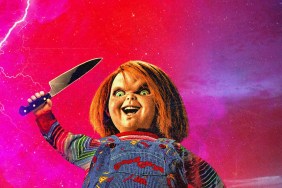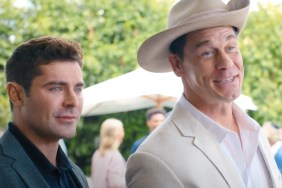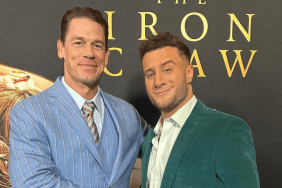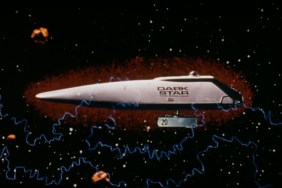
I‘ve heard a lot of reactions from people who have seen the TV spots and trailers for Disney’s John Carter. Most of them are along the lines of “it looks like Attack of the Clones” or “oh, so it’s Avatar in the desert?” Not quite. While John Carter might seem derivative of about a dozen other movies, the argument could be made that it’s really the other way around.
John Carter feels to me like a timeless, old-fashioned swashbuckling adventure movie — the kind I remember watching with my dad when I was younger and the kind I can see myself returning to with my own children several years from now. The fact that the film is 100 years in the making might have something to do with that.
Edgar Rice Burroughs, best known as the creator of Tarzan, first introduced John Carter in a magazine serial in 1912. His adventures on Mars became so popular that a number of the serials were combined and published as a novel called A Princess of Mars five years later. Ten more books would follow over the next three decades, influencing a century’s worth of science fiction writers and filmmakers, including George Lucas, who acknowledges there would be no Star Wars without John Carter, and James Cameron, who cites the Burroughs books as a direct influence on Avatar.
The first attempt at a film adaptation came in 1931 when Looney Tunes director Bob Clampett set out to make A Princess of Mars into an animated feature for MGM. The test footage was poorly received, but had it been made, the film would have preceded Disney’s Snow White and the Seven Dwarfs (1937) as America’s first full-length animated film. You can see Clampett discussing some of his early animations in the video to the right.
“There are walk cycles that exist from it and I think we should all be glad that Bob didn’t go forward with that production. It didn’t look great,” remarked John Carter producer Jim Morris, who actually had some ties with the next major push to film the novel.
“I was actually working at Industrial Light & Magic, and John McTiernan (Die Hard) was going to make a version of this movie starring Tom Cruise,” he said “It was 1989. So my first connection with it was really then.” The project stalled when McTiernan realized technology had not yet advanced enough to do the material justice.
Paramount acquired the property in the early 2000s, with Robert Rodriguez, Kerry Conran (Sky Captain and the World of Tomorrow) and, finally, John Favreau all attached to direct at various stages. This marked a high point of anticipation for lifelong fan Andrew Stanton, who by this point was enjoying his own success at Pixar.
“I pretty much spent 30-plus years, just waiting for somebody, please God, put it on the screen,” Stanton said. “And when Favreau had it in the mid-2000s and I was now making movies and artists are always one separation away from other artists, so I knew people who were working on it. And I thought, ‘oh, it’s going to get made, finally, finally, finally!'”
“Crestfallen” was how Stanton described his feelings when the project eventually fell apart. But then he took it upon himself to break the ‘Curse of John Carter.’ He first brought the project up to Walt Disney Studios Chairman Dick Cook during what was a casual phone conversation. Or at least it started that way:

“I go, ‘You know, I just heard this property went back to the estate. I know Disney doesn’t have good blood with them because you had this property back in the ’80s for almost ten years and didn’t do anything with it, but you’re now in good standing with them because of the Tarzan animated movie. You guys gotta make this,'” Stanton said.
“‘It’s just a travesty that it’s going to be nearly 100 years and this thing has never been made into a movie, and technology has completely caught up so we can do it,'” Stanton pleaded. “‘Now, look, I’ve never made a live-action movie before,’ and again, I still had two more years to finish on WALL-E. And I said, ‘If I finish WALL-E and I’m not a one-hit wonder because of Nemo, them maybe you’d consider me, but even if you don’t, please God, I’m just telling you, it should be made and it should be you guys.’
“A month later [Cook] came back and said, ‘We got the three books, do you want to do it or not?’ And it was like, be careful what you wish for, because I was expecting to have that conversation maybe in two years. So it kind of was one of these things where it just happened. But it really happened out of just pure crazed desire as a fan to see it be put on the screen.”
Though I’m sure it was tempting to look back at all the previous incarnations of the project, Stanton refrained. “I didn’t want to make a Xerox of a Xerox,” he explained. And while he was obviously a huge fan of the source material, he also knew he’d have to take some liberties with its serialized nature.
“The books, they’re very episodic and they’re kind of lacking an overarching villain, and the characters are a little bit on the vanilla side,” Morris said. “And Andrew had a take on it that was a little bit different than that and turned that character into somebody that had some damage to him.”

That damage is something Morris also sees in the eyes of the man they eventually cast as their star. “He doesn’t come across as somebody that is all okay with the world,” Morris said of Taylor Kitsch. “There’s a little bit of that torment in him.”
Producer Lindsey Collins recalled taking an interest in Kitsch very early on. “Literally, I have emails that I sent to Andrew from, like 2006, where I was like, ‘What about Riggins [Kitsch’s ‘Friday Night Lights’ character]?” she explained, but the early thinking was that he was too young.
Stanton said they were originally looking for someone between the ages of 35 and 45. “And then I’m kind of going ‘well wait a minute’ and I went back to IMDb and Sean Connery was 29 when he did Dr. No, Harrison Ford was 31 when he did Star Wars… and I’m like, ‘Oh, my gosh, he’s prime real estate.'”
The way Carter is initially treated on Mars is very similar to how he was treated on Earth: as an outlaw. He’s a Civil War veteran and the film is very much a space western, so the film demanded that sort of old-school leading man performance. “I think he’s kind of, I don’t want to say Clint Eastwood-y, but understated,” Morris said of his star. “He’s a man of few words but he’s able through his facial expressions to kind of communicate a range of stuff and he’s got a comedic outlook as well. He’s a little bit self-effacing in that Harrison Ford sort of way.”
And as far as the rumors of running over the film’s reported $250 million budget, Stanton responded with a resounding “it’s bullshit.” He elaborated, “They gave me extra re-shoot dates because I was on budget and on time, because I was such a good citizen.” Such a good citizen, in fact, that even though the sequel hasn’t been greenlit yet, they’ve already started writing the screenplay. You know, just to stay ahead of the curve.
John Carter hits the big screen in his own feature film for the first time in 100 years this Friday, March 9. Will the citizens of Earth support him to the point we’ll see that sequel?









